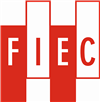FIEC: A new spin on the circular economy
16 September 2020

A closer look at what’s really new in the European Union’s Circular Economy Action Plan
Why a new plan now?
The circular economy has never been out of the spotlight in recent years, in terms of priority policy areas. When the European Green Deal was announced at the end of last year, it was no surprise that circular economy was again an important feature. Then in March this year, the “new” Circular Economy Action Plan was published. Since then, it has taken on even more significance as in the EU we are battling with the impact of the Covid-19 crisis and the recently proposed Recovery Plan has become inextricably linked with green objectives. The transition to the circular economy, along with the renovation wave, means new jobs, growth, decarbonisation and protection of natural resources.
At first glance, the new Circular Economy Action Plan looks remarkably similar to the one published in 2015. This is logical when we consider that the broad direction has not changed: from linear to circular economy, from overuse of virgin materials to greater use of secondary materials, from built in obsolescence to extended life and repair.
However, there is a subtle re-emphasis, which is welcomed by FIEC.
In tune with FIEC’s concerns
A commitment to streamline the legislative framework
FIEC has always stressed that the Construction Products Regulation (CPR, 305/2011) should be the baseline in terms of relevant measures for products. That said, although we want to avoid duplicating legal requirements, we also recognise that the CPR cannot include all regulatory measures. For example, the properties of chemical substances are covered by REACH and we believe this should continue to be the case. Nevertheless, we strongly welcome the commitment in the new Plan to ensure coherence between various relevant legislation.
Reassuring the market about the quality of secondary materials
Contractors are ready to use secondary materials, so long as they are able to rely on the quality and performance of these materials. The new plan refers specifically to digital passports, tagging and watermarks and all of these approaches would improve the perception of secondary materials, which are sometimes considered inferior to virgin materials. What will be a game changer though is the rapid development of European harmonised standards for secondary materials. FIEC believes that this will stimulate the market for secondary materials. Assuming this happens, then of course these materials need to be widely available, otherwise a level of demand that cannot be matched by adequate supply will only push up the prices of secondary materials and this will be counter-productive, as the industry may be forced to choose less expensive virgin materials.
The welcome acknowledgement of the role of digitalisation
Digitalisation “…will not only accelerate circularity but also the dematerialisation of our economy”, says the plan.
FIEC has long stated that digitalisation is an enabler for all the major EU policy goals and this applies in particular to the circular economy. Therefore, we strongly welcome the link made in the plan to the digital transition, which will facilitate the circular economy. In particular, we strongly support the development of the EU Digital Log Book for buildings, which should underpin all existing initiatives. The log book should create a common interface, which facilitates the link to other relevant sources of information. This should include a basic level of information that allows evaluation of substance content prior to recycling or reuse.
On the horizon – taxonomy for circular economy
Another important feature of the European Green Deal is the EU taxonomy, which is a classification to determine under which conditions an economic activity can be considered as environmentally sustainable and which covers a wide range of construction activities. In short, an activity can be labelled as sustainable when it contributes to the achievement of one out of six environmental objectives while doing no significant harm, which would jeopardise the others.
Until the end of this year, the taxonomy will be extended to include the mitigation of and adaptation to climate change. This already includes do-no-significant-harm criteria such as a minimum target for the amount of construction and demolition waste that will be recycled and a minimum target for wood used in construction, sourced from sustainable forests.
By the end of 2021, a circular economy taxonomy will be set up defining under which conditions an economic activity is deemed to make a substantial contribution to the transition to a circular economy. As well as the work done on circular economy, FIEC has written positions on the different chapters of the taxonomy.
FIEC’s position paper on the new Circular Economy Action Plan, as well as its positions on taxonomy, can be found at www.fiec.eu




